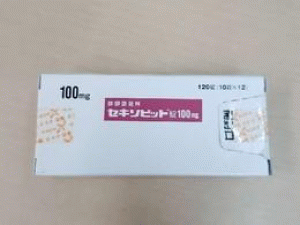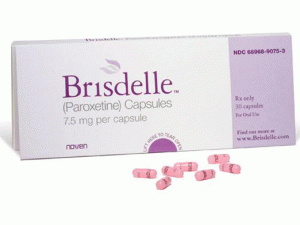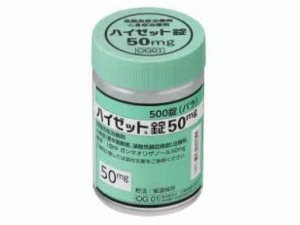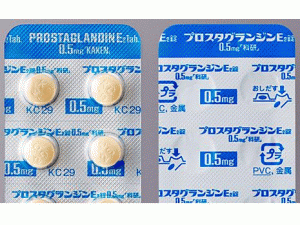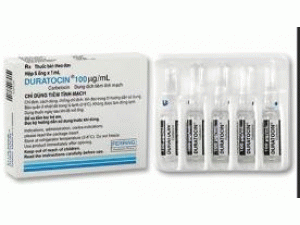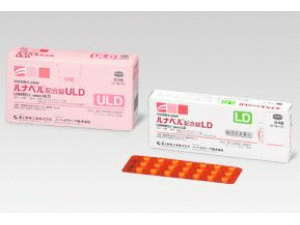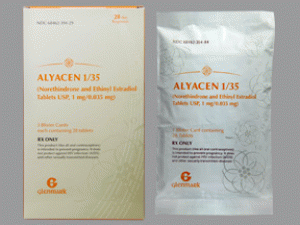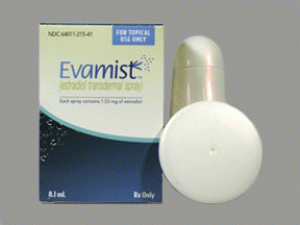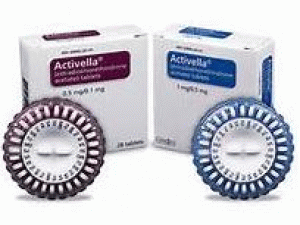催产素注射液pitocin 10UI/ml 25X1ml(oxytocin )说明书
[caption id="attachment_26419" align="alignleft" width="300"]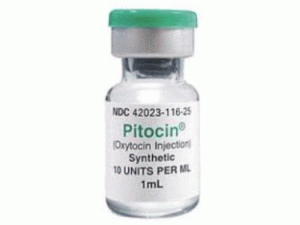 pitocin 10UI/ml 25X1ml(oxytocin 催产素注射液)[/caption]
药店国别:
产地国家:美国
处 方 药:是
所属类别:10单位/毫升 25瓶X1毫升
包装规格:10单位/毫升 25瓶X1毫升
计价单位:盒
生产厂家中文参考译名:JHP Pharmaceuticals, LLC
生产厂家英文名:JHP Pharmaceuticals, LLC
原产地英文商品名:PITOCIN 10U/ML VL 25X1ML
原产地英文药品名:oxytocin
中文参考商品译名:PITOCIN 10单位/毫升 25瓶X1毫升
中文参考药品译名:催产素
pitocin 10UI/ml 25X1ml(oxytocin 催产素注射液)[/caption]
药店国别:
产地国家:美国
处 方 药:是
所属类别:10单位/毫升 25瓶X1毫升
包装规格:10单位/毫升 25瓶X1毫升
计价单位:盒
生产厂家中文参考译名:JHP Pharmaceuticals, LLC
生产厂家英文名:JHP Pharmaceuticals, LLC
原产地英文商品名:PITOCIN 10U/ML VL 25X1ML
原产地英文药品名:oxytocin
中文参考商品译名:PITOCIN 10单位/毫升 25瓶X1毫升
中文参考药品译名:催产素
 pitocin 10UI/ml 25X1ml(oxytocin 催产素注射液)[/caption]
药店国别:
产地国家:美国
处 方 药:是
所属类别:10单位/毫升 25瓶X1毫升
包装规格:10单位/毫升 25瓶X1毫升
计价单位:盒
生产厂家中文参考译名:JHP Pharmaceuticals, LLC
生产厂家英文名:JHP Pharmaceuticals, LLC
原产地英文商品名:PITOCIN 10U/ML VL 25X1ML
原产地英文药品名:oxytocin
中文参考商品译名:PITOCIN 10单位/毫升 25瓶X1毫升
中文参考药品译名:催产素
pitocin 10UI/ml 25X1ml(oxytocin 催产素注射液)[/caption]
药店国别:
产地国家:美国
处 方 药:是
所属类别:10单位/毫升 25瓶X1毫升
包装规格:10单位/毫升 25瓶X1毫升
计价单位:盒
生产厂家中文参考译名:JHP Pharmaceuticals, LLC
生产厂家英文名:JHP Pharmaceuticals, LLC
原产地英文商品名:PITOCIN 10U/ML VL 25X1ML
原产地英文药品名:oxytocin
中文参考商品译名:PITOCIN 10单位/毫升 25瓶X1毫升
中文参考药品译名:催产素
简介
部份中文催产素处方资料(仅供参考) 缩宫素(Oxytocin) 别名:催产素、Pitocin。 作用和用途: 能直接兴奋子宫平滑肌,使子宫收缩。小剂量时,使妊娠末期子宫体产生节律性收缩,使子宫颈平滑肌松弛,促使胎儿顺利娩出。大剂量时引起子宫平滑肌的强直收缩,压迫肌纤维间血管而止血。口服易被消化液所破坏,注射时作用迅速,但维持时间不长。用于引产、催产、防治产后出血。 剂量与用法: 引产和催产:静滴,2.5-5u/次,加入5%葡萄糖液500ml内缓慢滴注。 防治产后出血:肌注,5-10u/次,极量20u/次,也可加于5%葡萄糖中静滴。 不良反应: 剖宫产术中宫体注射有致呼吸困难者。 过敏反应:表现为胸闷、憋气、寒战、发热、心慌、高热寒战(达41℃)、口周发绀、血压下降。 药物过量:剂量过大、滴速太快,可是子宫强直性收缩而致胎儿窒息、胎盘早期剥离或子宫破裂。 注意事项: 骨盆过窄、产道受阻、明显头盆不称及横位产者禁用。 动脉粥样硬化者、心脏病、三胎以上产妇禁用。 有剖腹产史,子宫肌瘤剔除术史及臀位产者慎用。 药物相互作用: 缩宫素与甲氧胺同用时,会引起血压升高及严重头痛英文版说明
cy of the information contained herein; and these suggested doses and/or guidelines are not a substitute for clinical judgment. Neither GlobalRPh Inc. nor any other party involved in the preparation of this document shall be liable for any special, consequential, or exemplary damages resulting in whole or part from any user's use of or reliance upon this material. PLEASE READ THE DISCLAIMER CAREFULLY BEFORE ACCESSING OR USING THIS SITE. BY ACCESSING OR USING THIS SITE, YOU AGREE TO BE BOUND BY THE TERMS AND CONDITIONS SET FORTH IN THE DISCLAIMER. USUAL DILUENTS LR, NS Standard Dilutions[Amount of drug][Infusion volume][Infusion rate] [30units][500ml][Titrate] One milliunit per minute equals 1ml per hourOther: [10to 40units][1000ml] [Titrate] STABILITY/MISCELLANEOUS CLINICAL PHARMACOLOGY The pharmacologic and linical properties of oxytocin are identical with those of naturally occurring oxytocin principle of the posterior lobe of pituitary. Oxytocin exerts a selective action on the smooth musculature of the uterus, particularly toward the end of pregnancy, during labor, and immediately following delivery. Oxytocin stimulates rhythmic contractions of the uterus, increases the frequency of existing contractions, and raises the tone of the uterine musculature. When given in appropriate doses during pregnancy, oxytocin is capable of eliciting graded increases in uterine motility from a moderate increase in the rate and force of spontaneous motor activity to sustained titanic contraction. The sensitivity of the uterus to oxytocic activity increases progressively throughout pregnancy until term when it is maximal. Oxytocin is distributed throughout the extracellular fluid. Small amounts of this drug probably reach the fetal circulation. Oxytocin has a plasma half-life of about 3 to 5 minutes. Following parenteral administration, uterine response occurs within 3 to 5 minutes and persists for 2 to 3 hours. Its rapid removal from plasma is accomplished largely by the kidney and the liver. Only small amounts oxytocin are excreted in the urine unchanged. IMPORTANT NOTICE Oxytocin is indicated for the medical rather than the elective induction of labor. Available data and information are inadequate to define the benefits-to-risks considerations in the use of the drug product for elective induction. Elective induction of labor is defined as the initiation of labor for convenience in an individual with a term pregnancy who is free of medical indications. Antepartum Oxytocin is indicated for the initiation or improvement of uterine contractions, where this is desirable and considered suitable for reasons of fetal or maternal concern, in order to achieve early vaginal delivery. It is indicated for (1) induction of labor in patients with a medical indication for the initiation of labor, such as Rh problems, maternal diabetes, preeclampsia at or near term, when delivery is in the best interests of mother and fetus or when membranes are prematurely ruptured and delivery is indicated; (2) stimulation or reinforcement of labor, as in selected cases of uterine inertia; (3) as adjunctive therapy in the management of incomplete or inevitable abortion. In the first trimester, curettage is generally considered primary therapy. In second trimester abortion, oxytocin infusion will often be successful in emptying the uterus. Other means of therapy, however, may be required in such cases. Postpartum Oxytocin is indicated to produce uterine contractions during the third stage of labor and to control postpartum bleeding or hemorrhage. CONTRAINDICATIONS [top] Oxytocin is contraindicated in any of the following conditions: significant cephalopelvic disproportion; unfavorable fetal positions or presentations which are undeliverable without conversion prior to delivery, e.g., transverse lies; in obstetrical emergencies where the benefit-to-risk ratio for either the fetus or the mother favors surgical intervention; in cases of fetal distress where delivery is not imminent; hypertonic uterine patterns; hypersensitivity to the drug. Prolonged use in uterine inertia or severe toxemia is contraindicated. Oxytocin should not be used in cases where vaginal delivery is not indicated, such as cord presentation or prolapse, total placenta previa, and vasa previa. WARNINGS [top] Oxytocin, when given for induction or stimulation of labor, must be administered only by intravenous infusion (drip method) and with adequate medical supervision in a hospital. PRECAUTIONS General All patients receiving intravenous infusions of oxytocin must be under continuous observation by trained personnel with a thorough knowledge of the drug and are qualified to identify complications. A physician qualified to manage any complications should be immediately available. When properly administered, oxytocin should stimulate uterine contractions similar to those seen in normal labor. Overstimulation of the uterus by improper administration can be hazardous to both mother and fetus. Even with proper administration and adequate supervision, hypertonic contractions can occur in patients whose uteri are hypersensitive to oxytocin. Except in unusual circumstances, oxytocin should not be administered in the following conditions: prematurity, borderline cephalopelvic disproportion, previous major surgery on the cervix or uterus, including cesarean section, overdistention of the uterus, grand multiparity, or invasive cervical carcinoma. Because of the variability of the combinations of factors which may be present in the conditions listed above, the definition of “unusual circumstances” must be left to the judgment of the physician. The decision can only be made by carefully weighing the potential benefits which oxytocin can provide in a given case against the rare occurrence of hypertonicity or tetanic spasm with this drug. Maternal deaths due to hypertensive episodes, subarachnoid hemorrhage, rupture of the uterus, and fetal deaths and permanent CNS or brain damage of the infant due to various causes have been reported to be associated with the use of parenteral oxytocic drugs for induction of labor or for augmentation in the first and second stages of labor. Oxytocin has been shown to have an intrinsic antidiuretic effect, acting to increase water reabsorption from the glomerular filtrate. Consideration should, therefore, be given to the possibility of water intoxication, particularly when oxytocin is administered continuously by infusion and the patient is receiving fluids by mouth. Oxytocin should be considered for use only in patients who have been carefully selected. Pelvic adequacy must be considered and maternal and fetal conditions thoroughly eva luated before use of the drug. ADVERSE REACTIONS [top] The following adverse reactions have been reported in the mother: Anaphylactic reaction Nausea Postpartum hemorrhage Vomiting Cardiac arrhythmia Premature ventricular contractions Fatal afibrinogenemia Pelvic hematoma Excessive dosage or hypersensitivity to the drug may result in uterine hypertonicity, spasm, tetanic contraction, or rupture of the uterus. The possibility of increased blood loss and afibrinogenemia should be kept in mind when administering the drug. Severe water intoxication with convulsions and coma has occurred, associated with a slow oxytocin infusion over a 24-hour period. Maternal death due to oxytocin-induced water intoxication has been reported. The following adverse reactions have been reported in the fetus or infant: (Due to induced uterine motility) Bradycardia Premature ventricular contractions and other arrhythmias Permanent CNS or brain damage Fetal death (Due to use of oxytocin in the mother) Low Apgar scores at five minutes Neonatal jaundice Neonatal retinal hemorrhage OVERDOSAGE Overdosage with oxytocin depends essentially on uterine hyperactivity whether or not due to hypersensitivity to this agent. Hyperstimulation with strong (hypertonic) or prolonged (tetanic) contractions, or a resting tone of 15 to 20 mm H2O or more between contractions can lead to tumultuous labor, uterine rupture, cervical and vaginal lacerations, postpartum hemorrhage, utero-placental hypoperfusion, and variable deceleration of fetal heart, fetal hypoxia, hypercapnia, or death. Water intoxication with convulsions, which is caused by the inherent antidiuretic effect of oxytocin, is a serious complication that may occur if large doses (40 to 50 milliunits/minute) are infused for long periods. Management consists of immediate discontinuation of oxytocin and symptomatic and supportive therapy. DOSAGE AND ADMINISTRATION [TOP] Parenteral drug products should be inspected visually for particulate matter and discoloration prior to administration, whenever solution and container permit. Dosage of oxytocin is determined by the uterine response. The following dosage information is based upon various regimens and indications in general use. A. Induction or Stimulation of Labor Intravenous infusion (drip method) is the only acceptable method of administration for the induction or stimulation of labor. Accurate control of the rate of infusion flow is essential. An infusion pump or other such device and frequent monitoring of strength of contractions and fetal heart rate are necessary for the safe administration of oxytocin for the induction or stimulation of labor. If uterine contractions become too powerful, the infusion can be abruptly stopped, and oxytocic stimulation of the uterine musculature will soon wane. An intravenous infusion of nonoxytocin-containing solution should be started. Physiologic electrolyte solution should be used except under unusual circumstances. To prepare the usual solution for infusion, 1-mL Oxytocin Injection, 10 USP Units/mL is combined aseptically with 1,000 mL of nonhydrating diluent (physiologic electrolyte solution). The combined solution, rotated in the infusion bottle to ensure thorough mixing, containing 10 mU/mL. Add the container with dilute oxytocic solution to the system through use of a constant infusion pump or other such device, to control accurately the rate of infusion. The initial dose should be no more than 1 to 2 mU/min. the dose may be gradually increased in increments of no more than 1 to 2 mU/min. until a contraction pattern has been established which is similar to normal labor. The fetal heart rate, resting uterine tone, and the frequency, duration, and the force of contractions should be monitored. The oxytocin infusion should be discontinued immediately in the event of uterine hyperactivity or fetal distress. Oxygen should be administered to the mother. The mother and the fetus must be eva luated by the responsible physician. B. Control of Postpartum Uterine Bleeding Intravenous Infusion (Drip Method): To control postpartum bleeding, 10 to 40 units of oxytocin may be added to 1,000 mL of a nonhydrating diluent (physiologic electrolyte solution) and run a rate necessary to control uterine atony. Intramuscular Administration: 1 mL (10 units) of oxytocin can be given after the delivery of the placenta. C. Treatment of Incomplete or Inevitable Abortion Intravenous infusion with physiologic saline solution, 500 mL, or 5% dextrose in physiologic saline solution to which 10 units of oxytocin have been added should用药温馨提示:当您服用此药物时,需定期接受医疗专业人士的检查,以便随时针对其药效、副作用等情况进行监测。本网站所包含的信息旨在为患者提供帮助,不能代替医学建议和治疗。
药品价格查询,专业药品查询网站,药品说明书查询,药品比价 » 催产素注射液pitocin 10UI/ml 25X1ml(oxytocin )说明书
药品价格查询,专业药品查询网站,药品说明书查询,药品比价 » 催产素注射液pitocin 10UI/ml 25X1ml(oxytocin )说明书

